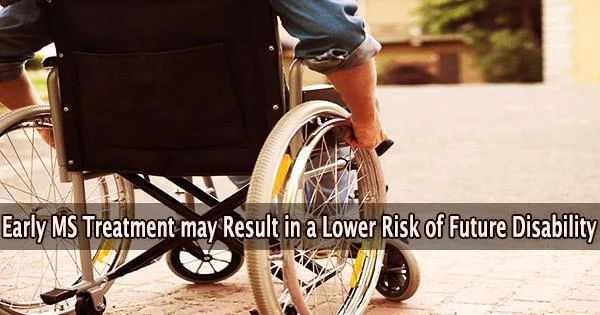Multiple sclerosis (MS) is a chronic autoimmune disease of the central nervous system (CNS), which includes the brain and spinal cord. It is characterized by the destruction of the protective covering of nerve fibers called myelin, resulting in communication problems between the brain and the rest of the body.
People who start taking medication soon after the first signs of multiple sclerosis (MS) may have a lower risk of disability later, according to a study published in the July 19, 2023, online issue of Neurology®, the medical journal of the American Academy of Neurology.
Myelin, the fatty white material that insulates and shields the nerves, is attacked by the immune system in MS, a disease. The exact cause of multiple sclerosis is not fully understood, but it is believed to involve a combination of genetic, environmental, and immune system factors. Symptoms of MS may include fatigue, numbness, tingling, or difficulty walking.
“When it comes to MS treatment, the earlier the better,” said study author Alvaro Cobo-Calvo, MD, PhD, of the Multiple Sclerosis Center of Catalonia and the Autonomous University of Barcelona in Spain. “Our study found that starting treatment within six months after the first symptoms is associated with a lower risk of disability over time.”
In order to conduct the study, researchers examined 580 individuals who had experienced their first episode of symptoms, such as tingling, numbness, muscle weakness, or balance issues, and who had taken at least one disease-modifying medication.
Researchers divided participants into three groups: 194 people who had their first treatment with an MS drug within six months after the first episode of symptoms, 192 people who had first treatment between six months and 16 months, and 194 people who had first treatment after more than 16 months.
When it comes to MS treatment, the earlier the better. Our study found that starting treatment within six months after the first symptoms is associated with a lower risk of disability over time.
Alvaro Cobo-Calvo
For an average of 11 years, researchers followed patients’ impairment levels and brain scans for signs of the disease’s effects on the brain and spinal cord. Disability scores ranged from zero to 10, with higher scores indicating more disability.
In comparison to those in the most recent therapy group, individuals in the earlier treatment group had a 45% lower risk of achieving a disability score of three at the end of the trial. An individual with a score of three can still walk without assistance but has a substantial disability in one of eight categories, such as motor function, eyesight, or cognitive abilities, or a mild disability in three or four categories.
A total of 42 people in the earliest treatment group, or 23%, reached a score of three, compared to 75 people, or 43%, in the latest treatment group.
Additionally, compared to those in the most recent therapy group, those in the earlier treatment group had a 60% decreased probability of progressing to secondary progressive MS, the disease’s last stage. In this stage, disability gets steadily worse.
A total of 14 people in the earliest treatment group, or 7%, were diagnosed with secondary progressive MS compared to 43 people in the latest treatment group, or 23%.
Additionally, they discovered that individuals who received the oldest form of treatment had a 50% higher likelihood than those who received the most recent form of treatment of being stable at their disease level a year after receiving it.
“Altogether, our results support the robustness and effectiveness of very early treatment to halt long-term disability progression, and stress that earlier detection and treatment is encouraged,” Cobo-Calvo said.
Additionally, researchers discovered that individuals in the earlier therapy groups had lower rates of disability progression and severe disability in a self-reported test than individuals in the latter treatment groups.
A limitation of the study was that it only included patients between ages 16 to 50 at the time of first symptoms, so the results could not be applied to patients over age 50, or late-onset multiple sclerosis.
The European Regional Development Fund, Carlos III Health Institute, Spanish Multiple Sclerosis Network, and the Agency supported the study for Management of University and Research Grants in Spain.
















